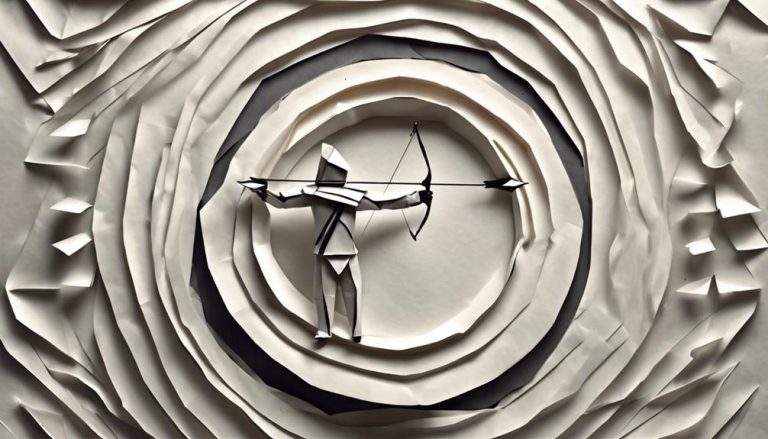General Rules of Motocross Sport
When it comes to motocross, did you know that the average speed during a race can reach up to 60 miles per hour? Understanding the general rules of this high-octane sport is important for both your safety and performance on the track. From safety gear requirements to race classifications and track etiquette, there's a lot to think about to guarantee a fair and thrilling race day experience. So, buckle up and get ready to explore the essential guidelines that govern the world of motocross.
Safety Gear Requirements
When gearing up for motocross, you'll want to make sure you have the necessary safety gear in place to protect yourself during your ride. Starting with helmet requirements, safety standards dictate that a properly fitting helmet must be worn at all times while riding. Helmets should meet the safety certifications set by organizations like the DOT (Department of Transportation) to make certain they provide adequate protection in case of falls or accidents. Investing in a high-quality helmet can be the difference between a minor scare and a serious injury.
In addition to helmets, other protective gear is also mandatory equipment in motocross. This includes goggles to shield your eyes from debris, a sturdy pair of gloves to improve grip and protect your hands, as well as durable boots that offer ankle support and impact protection. Wearing the proper protective gear not only keeps you safe but also enhances your performance by providing comfort and confidence while on the track.
Race Classifications and Age Groups
When it comes to motocross racing, understanding the various race categories and age divisions is essential for determining which competitions you can participate in. Different race classifications cater to riders of varying skill levels and experience, ensuring fair and competitive events for all participants. By knowing the race categories and age groups, you can choose the races that align with your abilities and age, setting yourself up for an exhilarating and fulfilling motocross experience.
Race Categories
Within the domain of motocross sport, understanding the various race categories, including race classifications and age groups, is essential for participants and spectators alike. When it comes to race categories, here are some key points to bear in mind:
- Skill Levels: Races are often divided based on skill levels to guarantee fair competition and safety on the track.
- Competition Formats: Different race categories may follow distinct competition formats, such as circuit races, endurance races, or sprint races.
- Equipment and Track Conditions: Race categories can also vary based on the type of equipment allowed and the track conditions, influencing the overall experience and strategy required to compete effectively.
Being aware of these distinctions can enhance your appreciation of the sport and help you navigate the diverse world of motocross racing.
Age Division
Understanding the age divisions in motocross race classifications and age groups is essential for participants and enthusiasts alike to grasp the dynamics of competition within this thrilling sport. In motocross, age divisions help guarantee fair competition and safety on the track. Different age groups often correspond to varying skill levels and training programs tailored to meet the specific needs of each category of riders. Here is a table highlighting typical age divisions in motocross:
| Age Group | Skill Level |
|---|---|
| 4-6 years | Beginner |
| 7-9 years | Intermediate |
| 10-12 years | Advanced |
| 13+ years | Expert |
These age divisions not only create a level playing field but also allow riders to progress through the ranks as they improve their skills and advance through training programs.
Track Regulations and Etiquette
Exploring a motocross track calls for riders to follow specific regulations and etiquette to guarantee safety and fair competition. When you hit the track, it's important to adhere to the following guidelines:
- Respect Track Maintenance and Etiquette: Always respect the track and the effort put into maintaining it. Avoid cutting corners or creating new paths, as this can damage the track and create unsafe conditions for you and other riders. Additionally, follow any specific guidelines provided by the track officials regarding maintenance and track etiquette.
- Mindful Spectator Viewing, Behavior: Spectators play a significant role in the motocross environment. Be mindful of where you park your bike or stand to watch the race to make sure you are not obstructing the view or posing a safety hazard. Additionally, spectators should refrain from distracting riders during their races. Cheering is encouraged, but it's important to do so in a way that doesn't interfere with the riders' concentration and performance.
- Stay Alert and Communicative: While on the track, it's important to stay alert to your surroundings. Communicate with other riders using hand signals or verbal cues to indicate your intentions and avoid collisions. Clear communication can prevent accidents and guarantee a smooth riding experience for everyone on the track.
Starting Procedures and Flags
Prepare yourself for the adrenaline-pumping moment when the gate drops and the race begins with a thorough understanding of motocross starting procedures and flag signals. Starting positions play an important role in determining your initial advantage in a motocross race. Securing a good starting position through qualifying rounds or gate selection can set the tone for your race strategy. It's critical to mentally prepare for the intense moments leading up to the start, focusing on maintaining composure and readiness.
Flag signals are the primary means of communication between race officials and riders during a motocross event. The starting gate's operation is often signaled by a series of colored flags, with a red flag indicating the imminent start. Understanding the meaning of each flag is crucial for reacting promptly to changing track conditions or race situations. Green flags signify the start of the race, while yellow flags signal caution due to hazards on the track. Riders must be vigilant and responsive to flag signals to guarantee their safety and the smooth progression of the race.
Developing a race strategy that incorporates starting procedures and flag signals can give you a competitive edge on the motocross track. By mastering the art of efficient starts and staying alert to flag signals, you can navigate the chaotic beginnings of a race with confidence and skill. Remember, a strong start can often dictate the outcome of a motocross race, so hone your starting techniques and flag awareness to maximize your performance.
Passing and Blocking Rules
When it comes to the intricate world of motocross, understanding the nuances of passing and blocking rules is important. You'll want to grasp the passing etiquette guidelines, defensive blocking techniques, and penalties for rule violations. These points are essential for maintaining a fair and competitive environment on the track.
Passing Etiquette Guidelines
Understanding the essential passing and blocking rules in motocross is important for maintaining safety and fair competition on the track. When it comes to passing etiquette guidelines, consider these key points:
- Respect Personal Space: Give other riders enough room when attempting to pass to avoid collisions.
- Communicate Intentions: Use hand signals or bike positioning to indicate your intention to pass, enhancing safety.
- Timing is Key: Choose the right moment to pass, considering the track conditions and your speed to execute a successful maneuver.
Mastering these passing strategies and proper etiquette not only improves your race strategy but also enhances your mental preparation for competitive motocross events.
Defensive Blocking Techniques
To navigate the intricacies of defensive blocking techniques in motocross, you must employ strategic positioning and precise timing to maintain your position on the track effectively. When facing aggressive opponents, understanding offensive maneuvers is vital. Defensive tactics like subtle movements and track awareness can help you defend your position without causing hazards. Strategic positioning involves finding the best lines to prevent rivals from passing you easily. By staying alert to your surroundings and the movements of other riders, you can anticipate their actions and react accordingly. Remember, defensive blocking is a skill that requires finesse and awareness. Mastering these techniques will enhance your racing abilities and keep you competitive on the track.
Penalties for Rule Violations
Understanding the rules of motocross requires an understanding of the penalties for violations, particularly in passing and blocking situations on the track. When it comes to penalty enforcement on the track, here are some key points to keep in mind:
- Warning System: Riders are often given warnings for rule violations before more severe penalties are enforced.
- Consistent Application: Penalties should be applied consistently across all riders to guarantee fairness and maintain the integrity of the sport.
- Vital Judgement: Officials play a vital role in making fair judgments when it comes to penalizing rule infractions, taking into account the context of the situation and the intent of the rider.
Scoring System and Points Distribution
When it comes to Motocross scoring, understanding the points distribution is essential for competitors and fans alike. In Motocross, points are awarded based on finishing positions in each race. The winner receives the most points, usually 25 points, while lower positions receive fewer points, with the last position typically getting 1 point. Points are vital as they determine the overall standings and championship outcomes.
Tiebreaker rules come into play when two or more competitors have the same number of points. In such cases, the tiebreaker rules consider factors like the number of race wins. The rider with more wins would be ranked higher. If the number of wins is also equal, the system looks at second-place finishes, and so on, until the tie is broken.
In Motocross, overtime procedures are in place to guarantee fair play and resolve any disputes. Overtime guidelines may vary depending on the specific event or series rules. Typically, in case of a race interruption, there are predefined procedures to restart or conclude the race fairly.
Understanding the scoring system and points distribution in Motocross is vital for both competitors aiming for victory and fans following the sport passionately. It adds an extra layer of excitement and strategy to the races, making every point earned an essential step towards the championship title.
Prohibited Substances and Doping Policies
Motocross athletes must adhere to strict regulations regarding banned substances and anti-doping policies to maintain the integrity of the sport. Doping prevention and substance abuse awareness are essential in ensuring fair competition and the safety of all riders. Here are three key points to take into account:
- Regular Testing: Athletes are subject to random drug tests to detect any prohibited substances in their system. These tests are crucial to deter individuals from using performance-enhancing drugs and to uphold the principles of fair play within the sport.
- Education Programs: Promoting awareness about the dangers of substance abuse is vital in preventing athletes from resorting to illicit means to enhance their performance. Educational initiatives help individuals make informed decisions and understand the consequences of using banned substances.
- Severe Penalties: Strict penalties, including suspensions and disqualifications, are imposed on athletes found guilty of doping violations. These consequences serve as a deterrent and underscore the zero-tolerance policy towards doping in motocross.
Frequently Asked Questions
Can Motocross Riders Use Communication Devices During Races?
During races, motocross riders cannot use communication devices. This rule prioritizes rider safety by preventing distractions and maintains fairness. Pit crew assistance is allowed during designated pit stops for essential communication and support, enhancing the race experience.
Are There Any Restrictions on the Type of Modifications That Can Be Made to a Motocross Bike?
When it comes to custom modifications for your motocross bike, there are some restrictions to keep things safe. Make sure your changes meet safety regulations to prevent any mishaps during your races.
What Happens if a Rider Is Disqualified During a Race?
If a rider is disqualified during a race, the consequences can be severe. Depending on the violation, penalties may include immediate removal, loss of points, fines, or even suspension. Appeals can sometimes mitigate repercussions.
Are There Any Specific Rules Regarding the Behavior of Spectators at Motocross Events?
When at motocross events, you're expected to follow behavior guidelines as a spectator. Respect the riders, refrain from distracting behavior, and stay clear of restricted areas. Your conduct can impact the safety and success of the event.
How Are Tie-Breakers Handled in the Scoring System for Motocross Races?
In motocross races, tie-breakers are resolved based on various factors like fastest lap times or previous race results. These rules aim to guarantee fair competition and prevent controversial decisions, enhancing the excitement of the sport.






